Three Continental Croatian Cities Cooperate in Name of EU Funding
August the 25th, 2021 - Numerous continental Croatian cities are hoping to get their hands on European Union (EU) Funds. Koprivnica, Cakovec and Varazdin are all on the hunt for EU cash injections following their recent decision on cooperation.
As Poslovni Dnevnik/Ana Blaskovic writes, this year's Spancirfest not only turned the historic core of Varazdin into a festival stage once again, but also opened the door to cooperation between three continental Croatian cities: Varazdin, Koprivnica and Cakovec, all of which agreed on a joint application for individual European Union projects.
"We've agreed on the models of our future joint cooperation in applying for some EU projects and funds, where each of us is too small to be able to apply on our own,'' said Varazdin Mayor Neven Bosilj, who hosted Cakovec Mayor Ljerka Cividini and their colleague Misel Jaksic from Koprivnica on Monday.
According to Bosilj, these three continental Croatian cities are among the top six in the entire country in terms of employment and are the (probably rather unexpected) drivers of economic activities.
At the same time, these three continental Croatian host the largest traditional events in the country, such as the aforementioned Spancirfest which is held annually in beautiful Varazdin, whose edition this year has been being visited by about 20,000 people a day, Porcijunkulov in Cakovec, and the Koprivnica Renaissance Festival, all of which attract crowds year after year.
"Tourism doesn't solely exist down by the coast. These are the three most important tourist events not only in this part of the country, but in the whole of continental Croatia,'' said Bosilj.
Cividini stressed that they must not miss out on grabbing the opportunity for cooperation on projects that are opening up through the ITU mechanism and other European Union funds.
"Cooperation will take place through the economy, tourism, cultural development. Today, we've shown that we have the will and that we want to do this, and there are a lot of projects," she said.
"I think this is a good trigger for our agricultural production, traditional crafts, cultural development and everything that makes life what it is up here in the north," Jaksic said.
For more on Croatian access to EU funding, follow our dedicated politics section.
Podravka Gets HRK 5.16m Grant For Its Future Solar Power Plant
ZAGREB, 1 June, 2021 - Podravka's project of a solar power plant, worth HRK 10.3 million, will be co-funded with a HRK 5.2 million grant by the European Union and the Croatian government under the Rural Development Programme, the Koprivnica-based food factory reported on Tuesday.
"The grant was awarded by the Ministry of Agriculture pursuant to a decision by the Agency for Payments in Agriculture, Fisheries and Rural Development, and pursuant to Podravka's application for implementation of the Sub-measure 4.2 'Support for investments in the processing, marketing and/or development of agricultural products' and implementation of operation type 4.2.2. 'Use of renewable energy sources'," the company said.
The expected period for return on investment with 50% support is 3.5 years.
The investment is valued at HRK 11.7 million, of which HRK 10.3 million is to be used for the construction of the solar power plant, while HRK 1.4 will be spent on the development of the measurement facility and the necessary transformer station.
"Podravka – Danica" 2.4 MW solar power plant is to be built at the Danica Industrial Zone in Koprivnica.
(€1= HRK 7.5)
For more about business in Croatia, follow TCN's dedicated page.
Renaissance Festival 2021 in Koprivnica Offers Croatian Traditional Crafts Workshops from August 19 to 22
May 21, 2021 - The Renaissance Festival 2021 to be held from August 19 to 22 in Koprivnica features the revival of various old crafts of Croatia as one of its biggest attractions this year to preserve these traditional practices.
As turistickeprice.hr reports, this year, the Tourist Board of Koprivnica leads in reviving and promoting old crafts of Croatia to tourists. As the generation who knows and carries these rare skills and practices gets older, most Croatian traditional crafts become less and less practiced and are now on the brink of completely disappearing. Due to this, the organizers of the festival decided to launch free training for those who are interested, especially to the young people, who they think will play a big role in preserving and saving these almost extinct practices. The available traditional workshops that will be offered are: wheelwrighting, coopering, basket making, gold washing, and thatching (straw-roofing). The workshops will consist mostly of hands-on practices and basic theoretical knowledge. Furthermore, the last masters of these crafts in Northern Croatia will be spearheading the transfer of these traditions to the new generation.
After the training, the Tourist Board of Koprivnica and Central Podravina will give the participants a chance to be involved in future events that preserve cultural heritage and history and they will also be able to offer their own arrangements in cooperation with travel agencies. The workshops have been announced to take place in June, in accordance with the relaxation of epidemiological measures, and will last from 3 to 5 days depending on the type of workshop. For those who are interested in learning the old crafts and participating in the workshops, you may contact the Tourist Board of Koprivnica.
Other fun things to expect at the Renaissance Festival 2021
The Renaissance Festival will be held on the remains of Koprivnica's city walls and is also featured as one of the Best Tourist Events in Croatia 2019/2020. To bring you back to the long-gone times of the Middle Ages, the festival offers medieval music and entertainers, knightly tournaments and horse fights, fencing, the largest fair of old crafts, and the largest and most unique wooden maze. It offers, as well, a unique gastronomic experience with their variety of medieval beers made of nettle, mead, capon, and pheasant or boar. The festival is also expected to have over 1,300 costumed participants from 15 European countries!
The use of plastic has been completely banned since several years ago, so expect your meals to be traditionally prepared - on the spot and in clay or wooden pots. The meals will showcase medieval recipes and it will also highlight the use of nettles (kopriva) - a plant that dominantly grows in this region and to which Koprivnica owes its name.
It will be a unique and authentic experience of the Middle Ages. Through interacting with historical figures such as brave knights, noble ladies, old crafts, beggars, lepers, court jesters, executioners and others - each visitor will be given a treat of a truly unique, bewitching, and fun return to history!
For more news about events in Croatia, follow TCN's dedicated page.
For more news about Croatia, CLICK HERE.
Koprivnica-Made Somersby Finds Popularity on Five Continents
May the 20th, 2021 - The Koprivnica-made Somersby drink has been gaining international popularity as it is exported from this continental Croatian town to five continents.
As Poslovni Dnevnik/Sergej Novosel Vuckovic writes, the Danish-owned Carlsberg Croatia Brewery, in addition to a wide range of its basic beer products also offers cider, a relatively new addition to the Croatian drinks scene, which is made from diluted fruit wine and based on apple juice.
This type of drink has been very popular in recent years in Croatia, despite having always been popular in Northern European countries such as the United Kingdom, and Carlsberg's cider brand Somersby is the leader on the Croatian market. It is produced in several flavours in the company's brewery in Koprivnica and from there it goes all over the world.
Koprivnica-made Somersby is enjoyed from distant Australia to Asia, and Marcin Burdach, President of the Management Board of Carlsberg Croatia, has been talking about the cider category, Croatian production, consumer trends as well as, of course, the beer market and expectations for the upcoming season.
You recently boasted that Somersby, produced in Koprivnica, is exported to 20 countries on 5 continents. What are the main markets?
Yes, you're right, we definitely did brag about it! We believe that consumers generally don't know that we produce Somersby in Koprivnica and export it. For us, it's a great source of pride. We’ve exported Koprivnica-made Somersby to different continents and countries around the world, and we don’t talk about it much. Back in 2020, Carlsberg Croatia regularly exported Somersby to eighteen markets.
As such, Koprivnica-made Somersby travelled to Germany, Hong Kong, Singapore, Israel, Austria, Tahiti, Taiwan, the Bahamas… However, it should be noted that this list is only relevant for last year - the list of countries to which Somersby has travelled from Croatia in recent years is much longer and includes Australia, the United States, the Congo, China, the Caribbean, Laos and many other places.
Isn’t that impressive and something to brag about? Our main export markets are Hungary and Germany and I think the fact that we export so much to Germany is a clear sign of quality, because everyone knows how crucial quality is in the German market.
How much Somersby was produced in the factory in Croatia last year? Have sales figures gone up?
Although we're still unable to release the full data for last year because the financial report hasn't yet been released, we can say that Somersby’s exports are increasing every year. If you want a picture of our exports, I can tell you that last year we exported 867 trucks of Somersby in bottles and more than 200 tanks of it. And yes, export numbers are better for 2020 than they were for 2019.
You've decided to further strengthen the visual of this drink with Croatian characteristics, why is that so?
We made a limited edition of the ''Croatian'' logo Somersby because we wanted to send the message that Somersby is not only a global, but also a local Croatian brand. Yes, the cans on our market are produced elsewhere, but we don't produce Somersby in bottles only for Croatia, that Koprivnica-made Somersby goes all over the world.
This is the merit of the Croatian mind and hardworking people in Croatia, who produce this drink for consumers around the world. We thought it would be easiest to convey that message visually and the feedback from consumers and our business partners about that has been great.
Your predecessor at the helm of Carlsberg Croatia told me that you would like to make Somersby from home-grown raw materials (apples), but that apple juice producers in the Republic of Croatia produce cloudy juice, and you need it to be clear. You've also expressed a desire for that to come to fruition, what does that happening depend on?
This is a logical question that always arises when we talk about the production of Somersby in Croatia - the question of the use of locally grown apples. The thing is that for the production of cider we need high quality apple juice which has certain characteristics, which allows us to produce apple wine.
Every time they ask us this question ''do you want to get those apples in Croatia'' the answer is simple - yes, we would like to get them from Croatia. But if there are no manufacturers who produce this product, it is simply not possible.
The first association to cider for Croats is Somersby, a recent Ipsos survey showed. Some respondents, as I've since foundd out, stated that this drink is more for younger people, they also said that the unit price in stores and bars is still too high. What actually is the target audience of Somersby cider in Croatia, and why is it more expensive than, for example, beer?
The truth is that Somersby is considered more of a drink for a younger audience, and its optimistic because consumers think of Somersby when they talk about cider. We found that consumers love the fact that we offer them a variety of flavours at Somersby, and that they consider it a refreshing summer drink.
Since Somersby is in a different price segment than beer, for example, we had feedback that consumers aren't the happiest with Somersby's prices in some cafes. But pricing in bars is something we can’t influence much, because it’s a matter of the owners and their business decisions.
After all, you know from personal experience that some locations in Croatia, especially those that target tourists, simply have higher prices than the average Croatian consumer considers affordable anyway.
Carlsberg is primarily a beer producer, how are things in Croatia in that regard? How much of a market share do your beer brands hold, given their wide range? How much do you produce?
Yes, beer is our main business, and it's something that isn't going to change, and you're right, we offer a wide range of beers. Last year we expanded our range to Pan, to which we added Pan Pilsner, so now we offer an even better choice in our main segment of stock.
So, now we have an offer for every taste - from Golden and Lager, through Pilsner, to Pan Dark and Pan Free. And that's just the beginning - Grimbergen, Carlsberg, Tuborg, Blanc 1664… Our portfolio of international brands provides even greater breadth to our consumers. Looking at last year’s data, we hold about 17 percent of the market and of course we want to grow that share even more.
What are your results for 2020 like? Most people's income was limited due to the pandemic, with closed bars and bans on larger gatherings...
We're unable to provide complete data for 2020 because the financial report hasn't yet been published. But of course, the pandemic influenced our results.
Everyone’s lives changed in 2020 and it’s hard for me to remember an industry or sector that hasn’t been affected by that change. Certainly, our partners in the HORECA segment have been hit hard, not to mention the situation with the event industry… these segments are still suffering and of course this is affecting us. It's hard to say when things will get better. In these circumstances, however, we're satisfied with our results.
Of course, we planned for bigger results, but we ended 2020 without any need to stop production and we managed to protect our employees and our business, which is certainly a success.
Carlsberg Croatia employs 300 people - how did you continue to organise production and the entire business with regard to the epidemiological measures?
Now that we've entered the second year of the pandemic, things are already well established and we've adapted to these new ways of working. But yes, at first it was difficult. There was so much that was unknown about this virus… I remember at one point we had a paper quarantine because we didn’t want to endanger our colleagues who deal with export paperwork.
Then came the shortages of protective equipment - in the spring of 2020, at one point we even used Somersby’s wine base to make disinfectants, so we could protect our employees. We teamed up with a small distillery and a disinfectant manufacturer and produced quantities that allowed us to give each employee half a litre of disinfectant so they could take it home and protect their families.
We donated the rest to the City of Koprivnica. We did this because it was so hard to get that protective equipment back then, and we wanted our employees to feel safer. Now it's all far simpler. We're applying various safeguards and we haven't relaxed, but now that is just another part of our health and safety rules. It's much easier psychologically.
Did you ask for state support to preserve jobs?
No, in 2020 we didn't use state aid, given the fact that we believed we could protect our business and that we could get help from the Carlsberg Group.
What do you expect from this year, especially from summer as the main period of consumption of your products?
We're optimistic about 2021. We think that globally as a Group, and locally as Carlsberg Croatia, we're strong, capable and in a good position to take advantage of opportunities. Of course, our success will depend on market trends and the development of the ongoing pandemic.
We hope that the season will be successful and that warmer weather will bring normalisation, as it did last year. I don't think you could find a person in Croatia who isn't looking forward to summer and I hope that people will welcome it with a cold Pan or Somersby in hand.
Carlsberg is also known for its promotion of drinking responsibly - in the workplace, while driving… How do you view the proposal for new regulations to repeal the provision on how much alcohol a driver can have in their blood?
We always promote responsible consumption. Through various programmes, and through the Association of Brewers, and within our company. In all our official vehicles, for example, we have a built-in Alcolock system.
The system is actually simple for the user, when sitting in the car it's necessary to blow into the test until it stops giving an audible signal. After a few seconds, in case the amount of alcohol is within the allowed limits, the system allows the car to be started. In this way, we motivate our employees to live in scope of the company rule of ''zero irresponsible consumption'' on a daily basis.
There are countless reasons why you shouldn't get behind the wheel after drinking alcohol and as a brewer, we're particularly sensitive to this topic. We believe that we need to make our employees aware of the importance of not driving at all when they drink.
When you think about what the regulation of the Labour Law is, then we don't even need such a measure. But we believe that promoting responsible behaviour and awareness is much more powerful than just relying on regulations. This is how I look at the proposal to change the regulations you're asking me about - yes, legal regulations are important, but I think it's even more important to educate and influence the consciousness of individuals.
Changing the law is a relatively easy and fairly quick process, but the effect that will be achieved as a result is questionable. Changing people's consciousness is a long-term job and a lot more effort needs to be put in there, but it is certain that positive change will happen.
For more, follow our business section.
New Technology Designed by Engineers Comes From Koprivnica Company
February the 10th, 2021 - One Koprivnica company has thought up some new technology which will work to meet the demands of new railway infrastructure, which has been a topic of investment conversations in Croatia for a while now.
As Poslovni Dnevnik/Lucija Spiljak writes, due to investment projects for the renovation and construction of railway infrastructure across Croatia, there was a need for the creation of various products that require new technologies, which was a demand met by the Koprivnica company Igma d.o.o., a member of the Nexe Group from Nasice, which has developed a new technology for the production of prefabricated platform elements made of cast concrete.
This new way and new technology was all designed by this Koprivnica company in close collaboration with technologists and engineers in the construction and mechanical engineering professions.
As explained in more detail by the director of the aforementioned Koprivnica company, Karlo Sisl, the order has raised a number of challenges, but the improvements, he says, are evident when compared to the classic design of concrete elements by vibro-pressing, earth-wet concrete, which they have used in production so far.
“The structure of cast concrete is uniform and its reinforcement protection is improved. With concrete additives, we can achieve a high level of resistance to water absorption and resistance to frost and salt," explained Sisl.
The Croatian Government continues to build and renovate transport infrastructure throughout Croatia in this, the so-called European Year of Railways, and new products have been installed on the reconstruction projects of Stupnik, Blinjski Kut and Laslovo - Korodj stations, and are currently being produced and delivered for the Virovitica railway construction, as well as the reconstruction project which involves the Pitomaca, Zapresic - Zabok sections, as well as the reconstruction of Sesvetska Sopnica station.
Prefabricated platform elements made of cast concrete are all made in accordance with the provisions of the standard HRN EN 15258: 2008 according to the 2+ system and this product has a Factory Control Certificate, a Declaration of Performance and remains under constant certification supervision.
For the latest travel info, bookmark our main travel info article, which is updated daily.
Read the Croatian Travel Update in your language - now available in 24 languages.
Koprivnica Stimulating Growth of Innovative Croatian Enterprises
January the 6th, 2021 - Last year put the nail in the coffin for many a would-be entrepreneurial venture, but not everything is quite so bleak. The continental Croatian town of Koprivnica, for example, is making quite the name for itself when it comes to stimulating the growth of Croatian enterprises of various types.
As Novac writes, the economic crisis caused by the ongoing coronavirus pandemic has hit the tourism-reliant Croatian economy extremely hard, there is practically no sector that hasn't been affected, but even in these extraordinary circumstances there are those who have found the knowledge, energy and new ideas needed to overcome this unprecedented and deeply difficult period.
Indeed, some of them have recognised the crisis as a period in which it is possible to lay the foundations for a new cycle of economic growth. Koprivnica is traditionally recognised as a strong economic, but above all industrial centre. Nevertheless, Koprivnica's local government is implementing a number of projects that stimulate entrepreneurship and make it easier for small Croatian enterprises to start up or expand their existing activities. In terms of the number of employees, Koprivnica is the 15th of all cities and municipalities in Croatia, and over 70 percent of the population is economically active. As a positive example, in this crisis-dominated year, the number of active craft owners increased by 8 percent when compared to last year, and there is even a slight increase in Croatian enterprises.
In Koprivnica today, there are the Dravska business zones covering 38 hectares with 23 business entities, as well as Radnicka with its 41 hectares and 20 business entities. These plots are fully equipped with communal infrastructure and are connected by road with the Podravina highway.
Furthermore, a year ago, in addition to the existing one, a new incubator for creative industries came to life, conceived as a space for the development of innovative and creative ideas, in October it celebrated one year of work. The fact that all rental spaces are now full speaks volumes about the success of the work going on there. Every day, the most modern technology is available to Croatian enterprises and entrepreneurs: holographic and VR equipment, a 3D printer, a gaming station and a teleconference hall.
In order to connect, share knowledge and collaborate, online DevCafe events are organised monthly, which allows all interested parties to get involved regardless of where they're located at that time. They are intended for anyone interested in topics from the fields of marketing, new technologies, design and IT. The project for the construction of the Creative Industries Incubator is worth 13.5 million kuna and is co-financed by the European Regional Development Fund.
It, as well as the Entrepreneurship Incubator, is managed by the entrepreneurial support institution Enter Koprivnica, which also implements several national and international projects in addition to that. As part of the ECOS4IN project, work is underway to establish a Digital Information Hub that will serve as the main place for informing the entire ecosystem and small and medium Croatian enterprises operating in the county and beyond, since Enter Koprivnica cooperates very well with the Varazdin Technology Park and the Technology Innovation centre of Medjimurje within the Digital Innovation Hub.
The most recent plan is to establish a database of experts that will be available to all small and medium-sized Croatian enterprises interested in business expansion and digitalisation. This will make it easier for SMEs to access knowledge, technology and funding opportunities. Enter Koprivnica has also been approved the SCALing up in the creative industries for SMEs and self-employed project, which aims to develop special tools for training employees in creative and cultural industries that will support them to improve their competencies and skills needed to strengthen their competitive advantage within this demanding sector.
The European Regional Development Fund also co-finances the project Services for SMEs through PPI Enter Koprivnica, which organises events for entrepreneurs from the county with the aim of facilitating access to business knowledge. All of the above, combined with a series of measures that Koprivnica has itself designed to encourage entrepreneurship, are an invitation to all small and medium-sized Croatian enterprises to develop their business in that town.
For the latest travel info, bookmark our main travel info article, which is updated daily.
Read the Croatian Travel Update in your language - now available in 24 languages
Strongest Croatian Brands Survived and Succeeded After Independence
January 4, 2020 – A map showing production across the former Yugoslavia details the sustained prosperity of many Croatian favourites as some of the strongest Croatian brands are shown not only to have survived but have succeeded following independence
Media across Croatia, Bosnia and Serbia have surprised younger readers and reminded older readers with the publication of a map detailing production in the former Yugoslavia. While this trip down memory lane has caused a range of reactions across the countries of the former republic, looking at the map from a purely Croatian perspective gives some enlightening information. Namely, many of the strongest Croatian brands visible on the map are recognisable today. Some of the strongest Croatian brands not only survived independence but have since grown.
Bajadera - one of the most popular products made by Zagreb-based chocolate and confectionery manufacturers Kraš
Zagreb-based chocolate and confectionery manufacturers Kraš, Požega-based confectionery and drinks manufacturers Zvečevo, oil company INA, Koprivnica-based food company Podravka and Koprivnica-based pharmaceuticals company Belupo, vitamin drink Cedevita, Varaždin-based food company Vindija, Vukovar shoemakers Borovo, Varaždin clothes designers and manufacturers Varteks and multi-use condiment Vegeta are just some of the strongest Croatian brands that are present on the map. You are still likely to see these brand names on many Croatian high streets. Some have succeeded in reaching further into international markets since Croatian independence.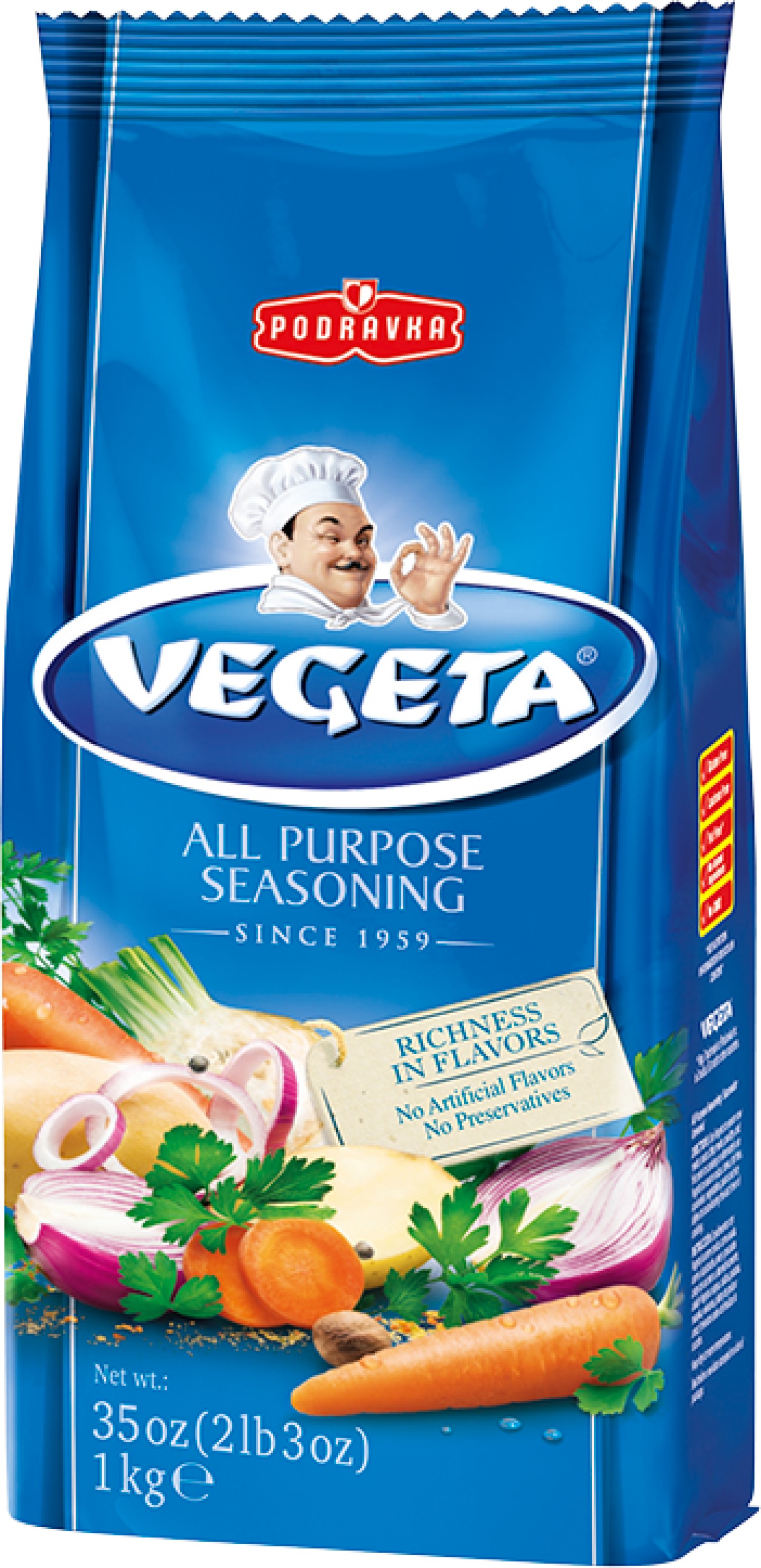 Croatian-made condiment Vegeta is sold all over the world
Croatian-made condiment Vegeta is sold all over the world
Of course, not every brand visible on the map of Yugoslavia production has fared so well. In their coverage of the map, Ri.portal reminds that “Some of the Yugoslav products were used by literally the whole world - ships, cars, planes, trucks, weapons and even computers were produced... However, many of these companies no longer exist or are bankrupt.”
In their coverage of the map, Bosnian website Klix reminds that Croatian shipyards Uljanik in Pula and 3 Maj in Rijeka were at world level and produced large ships for customers from all over the world. Split-based shipyard Brodosplit, which can also be seen on the map, survives to this day.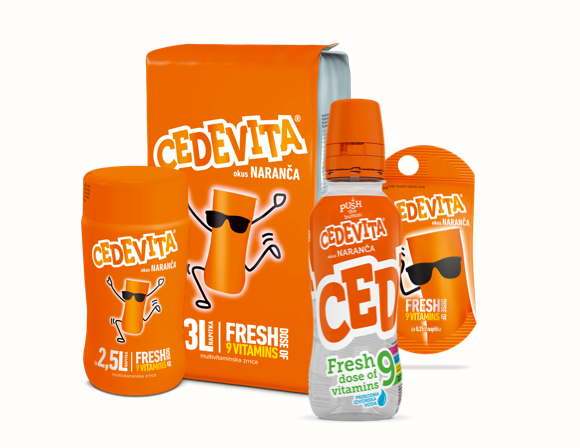
Croatian vitamin drink Cedevita comes in a range of flavours
Ri.portal goes on to remember that Yugoslavia was one of only five countries in Europe at the time that manufactured its own computers. “Probably the most famous is the Galaxy, while the first computer produced was the CER-10,” they say. One of the Yugoslav computer makers on the map, popular in the late 1970s, was Digitron, based in Buje in Istria.
Sadly, not all of the strongest Croatian brands have made it until today. Famous tractor and agriculture equipment manufacturer Tomo Vinković of Bjelovar is no longer in production. Their famously-reliable machines are much in-demand on the secondhand market. Two new tractor manufacturers, Hittner doo and the Prima tractor factory still make tractors in Bjelovar.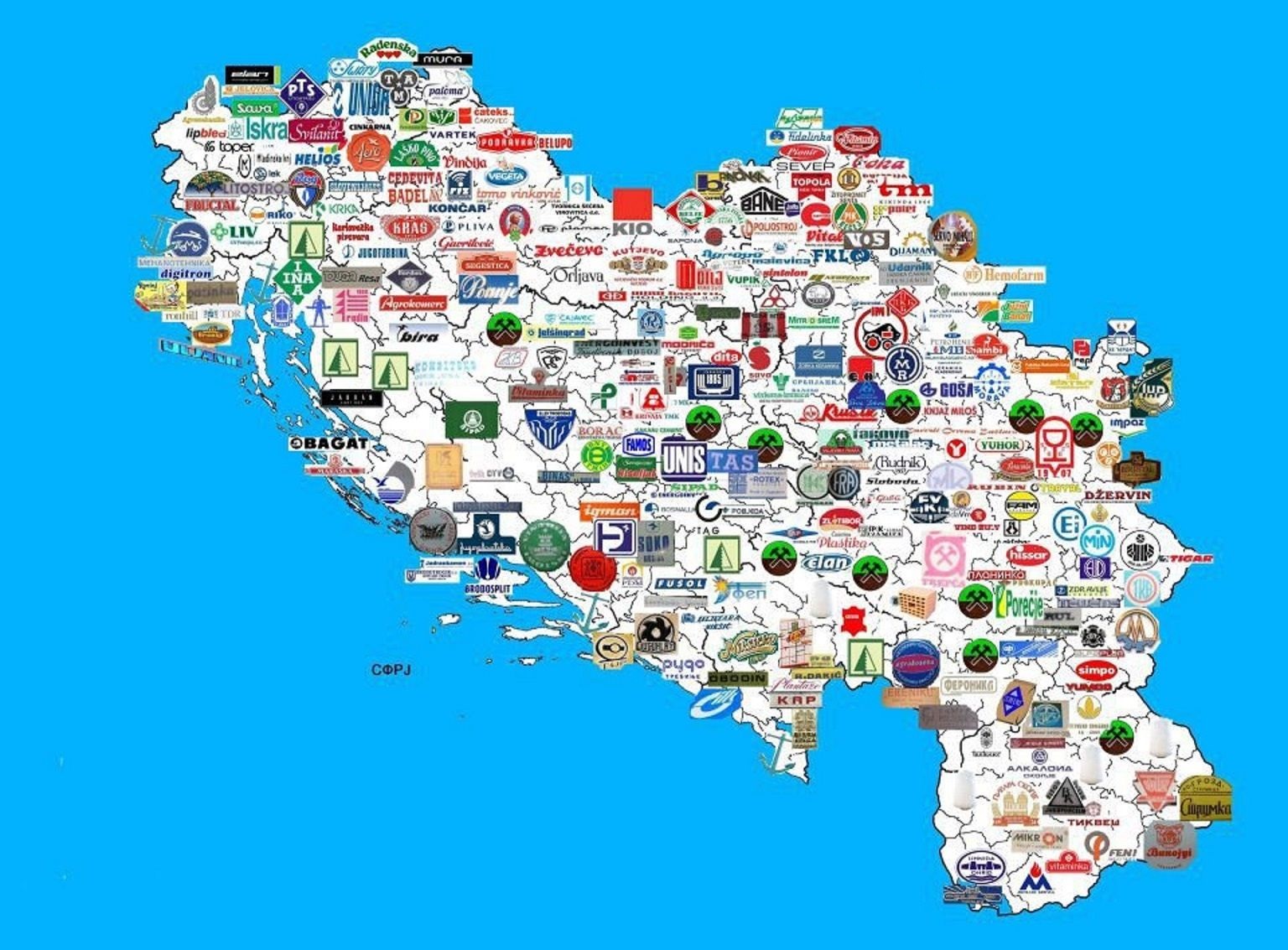
Croatia Pan Europe Trains Will Run 160 Kilometres Per Hour By 2030
November 2, 2020 – From southern Spain to Budapest through Rijeka and Zagreb and from Salzburg through Zagreb, Belgrade and Skopje to Greece, Croatia pan Europe trains will run 160 kilometres per hour by 2030
In the biggest investment ever made in the infrastructure of the country's rail network, Croatia pan Europe trains will run 160 kilometres Per Hour By 2030. In an investment costing 4.5 billion Euros, 750 kilometres of railways will be modernised.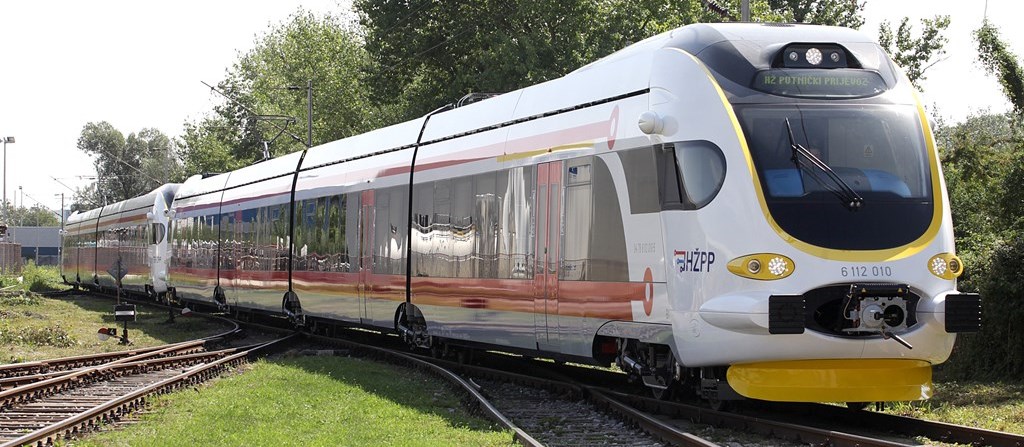 © HZPP
© HZPP
The lines that will receive the upgrade will connect Rijeka to Budapest in Hungary via Zagreb (RH2) and Zagreb to Belgrade via Vinkovci (RH1). Though these lines already exist, they have never undergone an overhaul of the scale proposed. The modernisation with ensure double lanes across the whole of both routes and facilitate passenger train speeds of 160 kilometres per hour.
The level of investment means that during the next ten years, HŽ Infrastruktura's (Croatian Railway Infrastructure Company) rebuild of the Croatia pan Europe trains network will be the largest infrastructure project in the Republic of Croatia and the largest beneficiary of EU grants in the transport sector. Most of the money for the modernisation is coming from European Union grants. Almeria on the Mediterranean, in Andalusia, southern Spain, where the Mediterranean Corridor begins © ddz photo
Almeria on the Mediterranean, in Andalusia, southern Spain, where the Mediterranean Corridor begins © ddz photo
The RH2 line is part of the Mediterranean Corridor which connects the south of the Iberian peninsula with eastern Hungary via six countries. The line runs from Almeria on the Mediterranean coast in the south-east of Spain, through Madrid and Barcelona. It passes through Marseille in France, then northern Italy, Slovenia, Croatia, the Hungarian capital of Budapest, before finishing in Záhony in the east of Hungary, not far from the border with Ukraine. The route covers more than 6000 kilometres. The Croatian section will pass through Jurdani (six kilometres north of Opatija), Rijeka, Karlovac, Zagreb, Dugo Selo, Križevci and Koprivnica.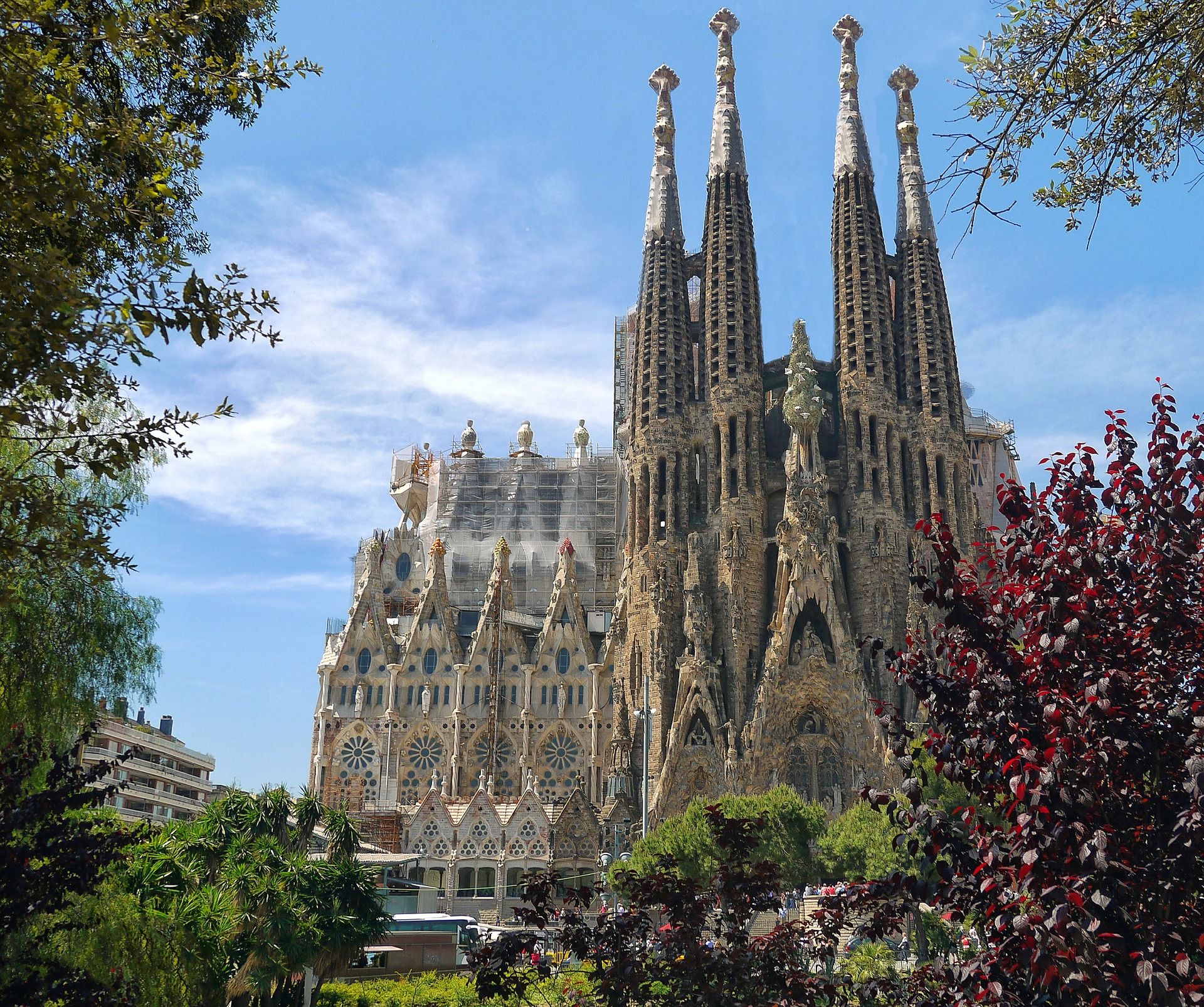 To Croatian rail passengers, the Spanish city of Barcelona will be just a few hours away by 2030 © Patrice Audet
To Croatian rail passengers, the Spanish city of Barcelona will be just a few hours away by 2030 © Patrice Audet
The RH1 line is part of the Pan-European Corridor X. The Croatia pan Europe trains section of this transport route was once one of the three lines taken by the Orient Express. The modernised rail line will start in Salzburg, Austria and pass through Ljubljana before reaching Zagreb. The line will pass through Slavonski Brod and Vinkovci before making its way to Belgrade, then Niš in southern Serbia. The old Oriental Express line then headed east, to Istanbul via Sofia, Bulgaria. The EU-funded train section of the Pan-European Corridor X instead heads south, to Thessaloniki in Greece via Skopje in Macedonia.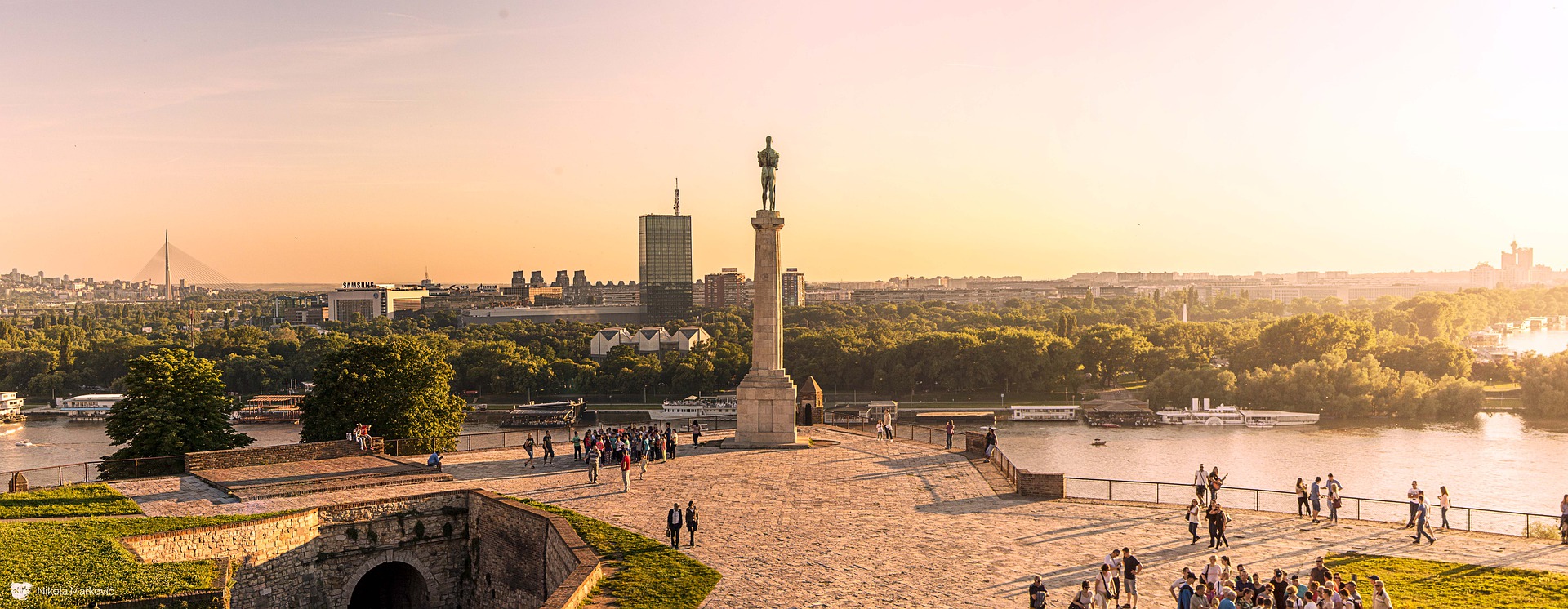 The rail journey time between Zagreb and Belgrade (pictured) will be shortened considerably by the improvements © Djordje Jovanovic
The rail journey time between Zagreb and Belgrade (pictured) will be shortened considerably by the improvements © Djordje Jovanovic
Trains are currently the greenest transport option for long-distance travel. As the world heads in the direction of seeking energy sources that do not rely on finite fossil fuels, rail also currently looks to be the long-distance travel option best-equipped to meet this challenge. In the future, visitors from all across Europe may increasingly rely on the Croatia pan European trains network in order to access the country. The improvements also increase business and leisure opportunities for Croatians in Europe. Thessaloniki in Greece is one of the most popular cities in Europe for visitors. The renewed rail section of the Pan European Corridor X will end here © Dimitris Vetsikas
Thessaloniki in Greece is one of the most popular cities in Europe for visitors. The renewed rail section of the Pan European Corridor X will end here © Dimitris Vetsikas
Around 935 million Euros was invested in the Croatian railway infrastructure between 2010 and 2019. The new investment dwarfs those figures. The initial investment, occurring between 2020 and 2024 amounts to as much as 1.8 billion Euros, of which almost 78.7 per cent is co-financed by the European Structural and Investment Funds (ESI) and the Connecting Europe Facility (CEF). From 2025 to 2030, EU funds totalling more than 2.7 billion Euros are expected to be invested in the Croatia pan European trains network.
Freight train passage along the lines will also be increased, reaching a new speed of 120 kilometres per hour. The Croatia pan European trains network also offers great potential to open up continental Croatia regions to international visitors. The Croatian railway network currently has 2,617 kilometres of track, of which 274 kilometres are double-track and 980 are electrified.
For the latest travel info, bookmark our main travel info article, which is updated daily.
Read the Croatian Travel Update in your language - now available in 24 languages
Continental Croatia Trains: Inland Opens Up With Green Travel
October 3, 2020 - With charter airlines in a state of flux and Croatia Railways beginning a renewal of their fleet in Slavonia, are continental Croatia trains the eco-friendly and best way to unlock the inland's amazing potential?
Everything changes. Nothing stays the same. Even before 2020 arrived, lifestyles and trends were headed in new directions. Eco-tourism and agro-tourism were two of the fastest-growing areas within the travel sector, this behaviour change a response to concerns about the environment. And nowhere in the country stands better poised to take advantage of this interest than continental Croatia.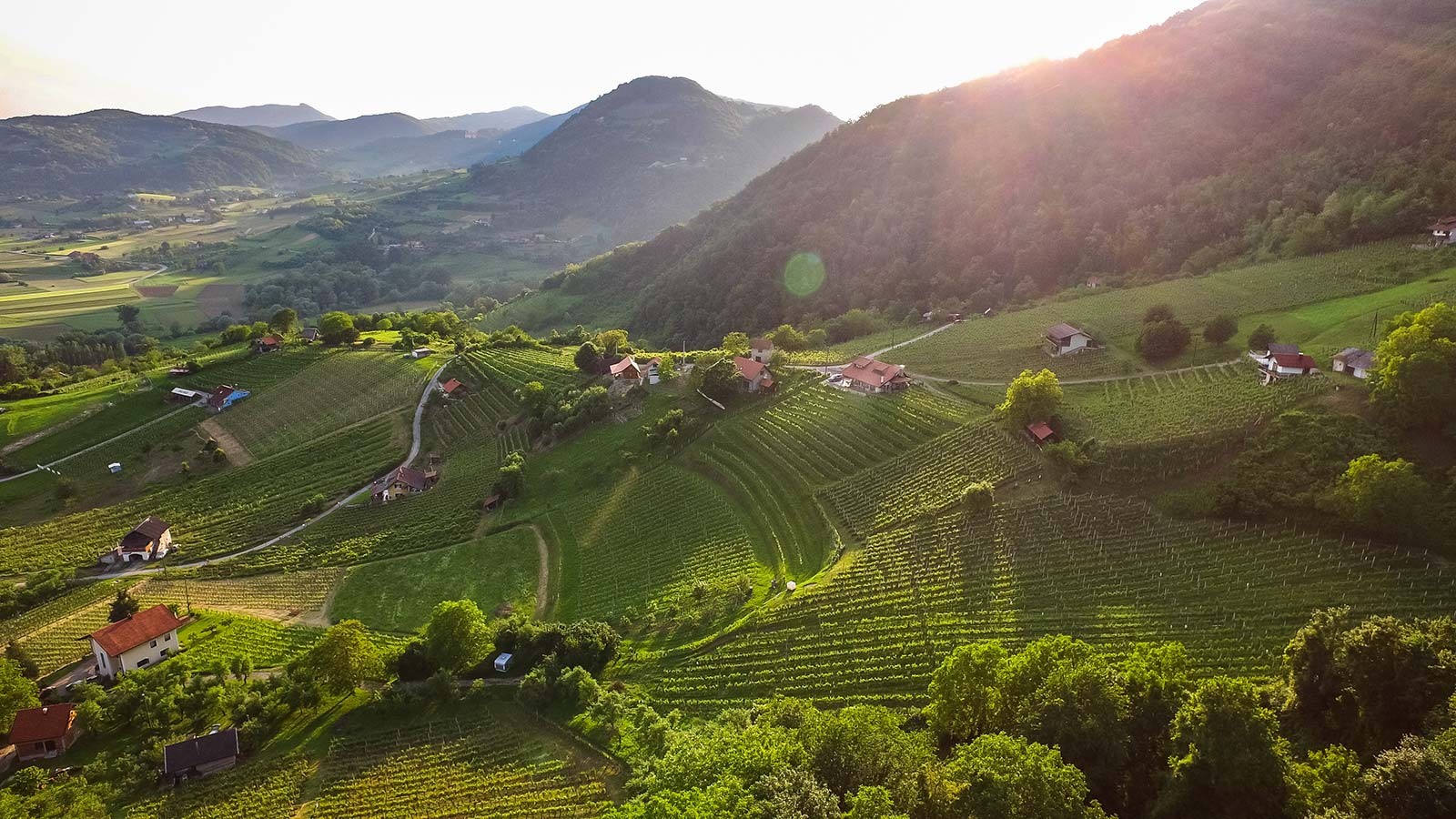 Impossibly pretty Zagorje - the region lies just north of Zagreb and is accessible by continental Croatia trains © Ivo Biocina / Croatia National Tourist Board
Impossibly pretty Zagorje - the region lies just north of Zagreb and is accessible by continental Croatia trains © Ivo Biocina / Croatia National Tourist Board
From the impossibly pretty hills of Zagorje, the peaceful rivers of Karlovac county and the hidden vineyards that surround the capital Zagreb to the vast Pannonian flatlands that stretch to Slavonia, Baranya, Vukovar-Srijem and beyond, the varied topography of continental Croatia is wild, exciting and - by many - wholly undiscovered.
This is land where agriculture and nature thrive side by side, where the stresses of modern-day existence ebb away as you readjust to a way of life that would look mostly familiar to the people who lived here centuries ago. These are places where you can truly be at one with yourself and with your surroundings. In continental Croatia, you often find yourself in an environment that is both timeless and traditional, yet wholly contemporary in regards to its ecological aspirations. And you're never far away from an exciting city environment that you can dip into on a whim – not just Zagreb, but Osijek, Slavonski Brod, Karlovac, Sisak and Varaždin too. To those who really know and love Croatia, Osijek is simply unmissable. It is both the capital of and the doorway to Slavonia and Baranya and should be more accessible by continental Croatia trains. Sadly, international transportation links to the city by air are also quite poor. Improvements in accessibility to Slavonia and Baranya by rail and road are imminent © Romulić & Stojčić
To those who really know and love Croatia, Osijek is simply unmissable. It is both the capital of and the doorway to Slavonia and Baranya and should be more accessible by continental Croatia trains. Sadly, international transportation links to the city by air are also quite poor. Improvements in accessibility to Slavonia and Baranya by rail and road are imminent © Romulić & Stojčić
Unlocking the incredible potential of continental Croatia relies on getting the message out there and facilitating travel to these regions
In recent TCN features we have detailed that motorways within Croatia are among the best in Europe - once you're inside Croatia, travelling by car (or bus) between the regions couldn't be easier. We have also seen evidence of the huge interest in travelling here by rail and using continental Croatia trains.
Of all the modern methods of long-distance travel, rail is by far the most eco-friendly. What better way to begin an environmentally friendly holiday than by arriving on continental Croatia trains? When the country wisely decided to prioritise its internal motorway system, a modern and fast inter-regional rail network was put on the back burner. Nowhere suffers greater from this decision than continental Croatia.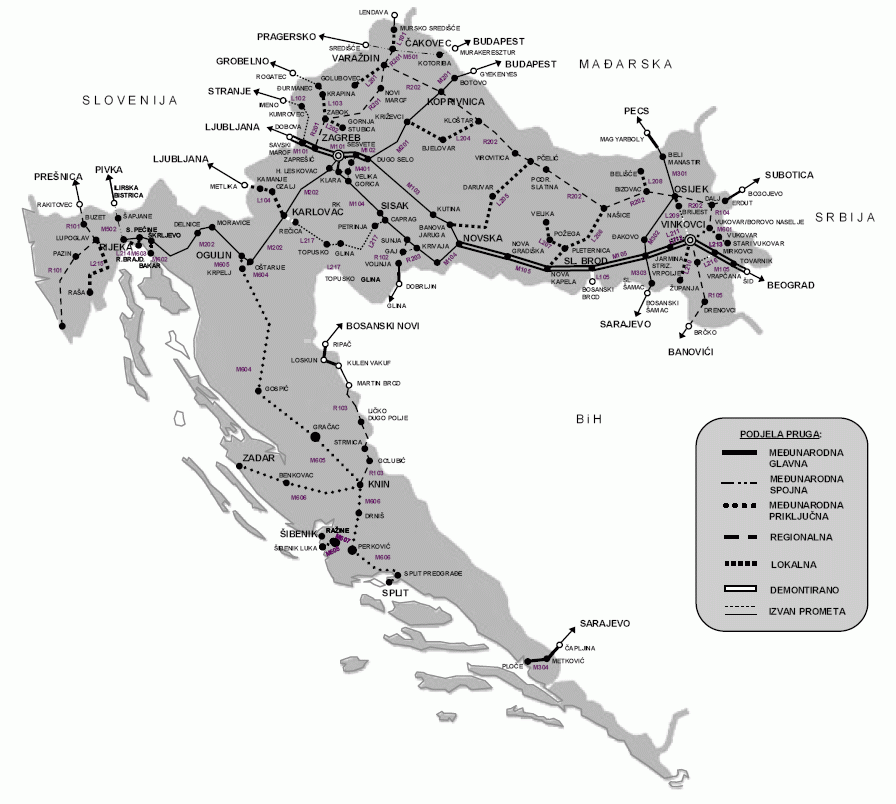 The Croatian rail network © Croatian Official Document uploaded to Wikipedia by Epepe
The Croatian rail network © Croatian Official Document uploaded to Wikipedia by Epepe
The only high-speed line that currently exists in Croatia links Rijeka to Budapest, via Zagreb and Koprivnica. Planned improvements hope to cut journey times between Zagreb and its nearest coastal city to an hour. Same as it ever was - Rijeka was the first Croatian city to be connected internationally by rail. That line also ran into the heart of Austro-Hungary and facilitated upper-class travel to places like Opatija. But does it best benefit the country to invest in more links to the coast or in continental Croatia trains? Well, the inland is not being ignored. Upgrades are being made to continental Croatia trains. This impressive beast actually services the country's coast. But would more investment in the continental Croatia trains network better service more people and help unlock the inland to tourists? Around 70% of the country's inhabitants live in continental Croatia © HŽPP
This impressive beast actually services the country's coast. But would more investment in the continental Croatia trains network better service more people and help unlock the inland to tourists? Around 70% of the country's inhabitants live in continental Croatia © HŽPP
The rail link between Zagreb and Slavonski Brod is so historic that it was once part of the four routes of the Orient Express. It has been maintained to a standard where you can make a relatively quick journey from the capital to Vinkovci via Slavonski Brod. The same cannot be said for rail travel to Osijek, the access point to Baranya and much more. So slow is the connection between Osijek and Zagreb that it has been possible over recent times to reach the Slavonian capital quicker by taking the train to Vinkovci, then the bus to Osijek, rather than travelling direct by rail.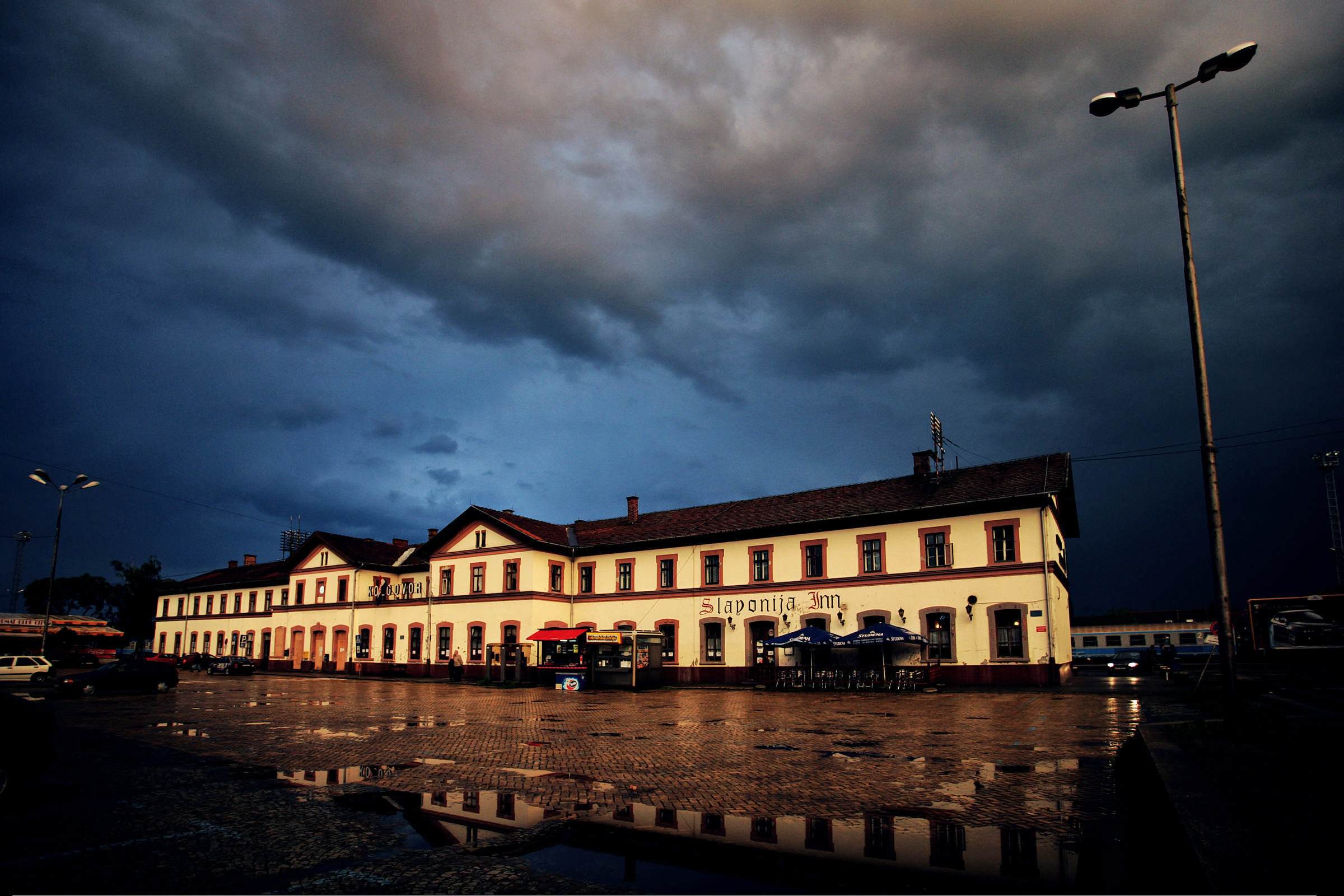 Osijek train station. A renovation to the building is planned for the near future © Romulić & Stojčić
Osijek train station. A renovation to the building is planned for the near future © Romulić & Stojčić
However, in February this year, Croatian Railways introduced four direct daily lines between Slavonski Brod and Osijek. And there will be a new tilting train line that will run between Zagreb to Osijek on Friday afternoon and from Osijek to Zagreb on Sunday afternoon, facilitating student travel. On October 15, the first low-floor train will run between Osijek and Vinkovci as an additional part of the renewal of their continental Croatia trains fleet in Slavonia. The welcome return of Croatia's second-oldest international rail line - linking Osijek to Pécs in Hungary, via Beli Manastir and Baranya - was introduced in late 2018.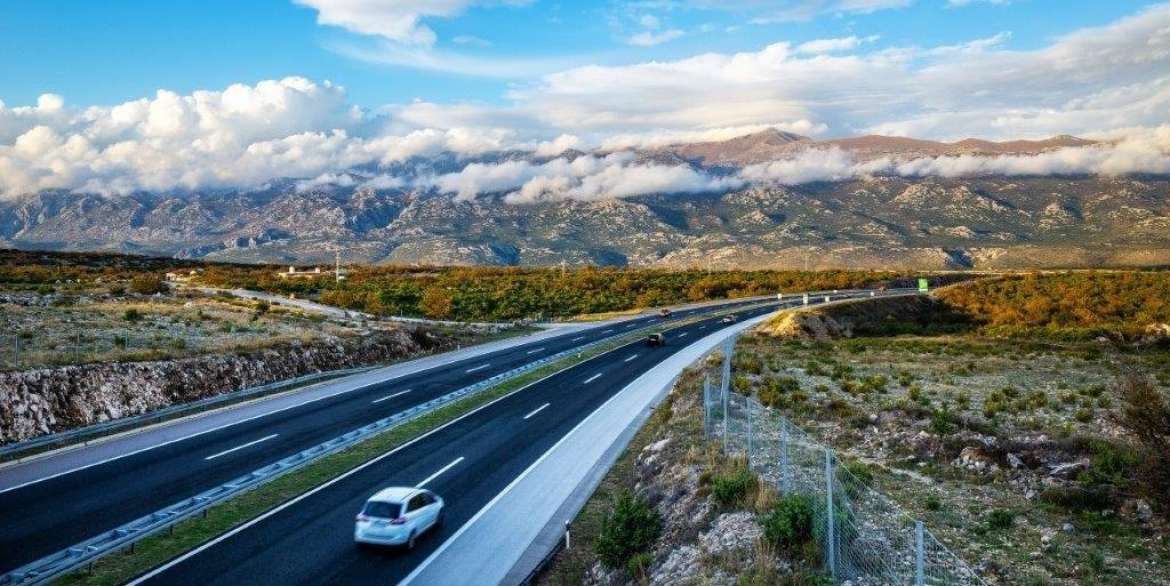 A motorway stretch between Metković and Dubrovnik, integrating the Pelješac bridge and the Croatian segment of the European corridor are the final big remaining projects in a three-decade-long undertaking to give Croatia one of the best motorway networks in Europe. Should Croatia's rail network be next? © Hrvatske Autoceste
A motorway stretch between Metković and Dubrovnik, integrating the Pelješac bridge and the Croatian segment of the European corridor are the final big remaining projects in a three-decade-long undertaking to give Croatia one of the best motorway networks in Europe. Should Croatia's rail network be next? © Hrvatske Autoceste
Access to Slavonia and Baranya will also be massively facilitated upon completion of the European corridor, which will connect North Europe to the Adriatic. Starting in Budapest, it necessitates the building of a bridge near Beli Manastir. Thereafter the motorway will pass by Osijek, connect to the Zagreb-Slavonia motorway near Lipovac, then pass through Bosnia and its capital Sarajevo and on to Ploče.
The removal of budget airline flights to the airport in Osijek remains a hindrance to attracting many international visitors to Slavonia and Baranya. However, with charter airlines facing the greatest uncertainty of all modes of transport at the current time, though their return is a must, it is perhaps now an ambition that should remain more long term. For the immediate future, improvements to rail travel look to be a brilliant way of opening up not only Slavonia, Baranya and Vukovar-Srijem, but also an eco-friendly access point capable of serving the whole of untapped continental Croatia.
For the latest travel info, bookmark our main travel info article, which is updated daily.
Read the Croatian Travel Update in your language - now available in 24 languages
TCN's Paul Bradbury Talks CROMADS, Croatia 2.0 at TEDx Koprivnica Library
July 13, 2020 - TEDx Koprivnica Library was held in a new setting, but the feeling is the same: great speakers, creatives, and thinkers inspired the full house.
Drava.info writes about the first edition of the TEDx Koprivnica Library held in ENTER, the creative industry incubator, which welcomed five remarkable speakers.
Melita Pavlek is a local Koprivnica woman, who shared her advice on how to live a happier and simpler life if we just learned some lessons from our pets: how to live in a moment, how to pay more attention and catch non-verbal cues, how to be curious and how to rest and be active on your own terms.
Kristina Čunović told the crowd about her project bringing together incarcerated parents with their children through reading. The parent participating gets to record a story that then gets delivered to their child, who gets to experience their parent reading a story to them. A simple idea, which helped strengthen family bonds in over 600 families in Croatia.
Paul Bradbury wants to inspire Croatian politicians and bureaucrats to change the country we live in, and he's certainly succeeded in inspiring the audience to change the way THEY see Croatia. In his 20 years in Croatia, he's gotten to know the best and the worst of our country, and he spoke about the fantastic lifestyle in Croatia: it's safe, it's in the EU, the infrastructure is good, the food and the wine are excellent. Foreigners don't understand why people would want to leave this country. He admitted that he fully appreciated how Croatia works only after hearing about the phenomenon of uhljeb. He presented the concept of Cromads, his solution for the development of Croatia, focusing on people who work from home, and want to move to a place that has the best lifestyle in Europe, and he thinks it's Croatia. He feels like that is the real opportunity for Croatian development and not tourism.
Karla Čurin told her story of overcoming barriers to achieve her goals, as she's been struggling with the severe hearing loss her whole life. She found herself in the graphic design and application building, and she developed Oaza, a mobile app that helps people suffering from depression, anxiety, and suicidal thoughts.
The Boljar Brothers, Hrvoje and Domagoj, spoke about their brand MIRET, the eco-friendly sneakers. They're the pioneers in being eco-friendly in an industry which is among the leading producers of waste in the world today, as 23 billion sneakers get made each year, and most of what they're made of can't be recycled. They use recyclable materials to manufacture their sneakers, which don't damage the environment, and they look great too!


